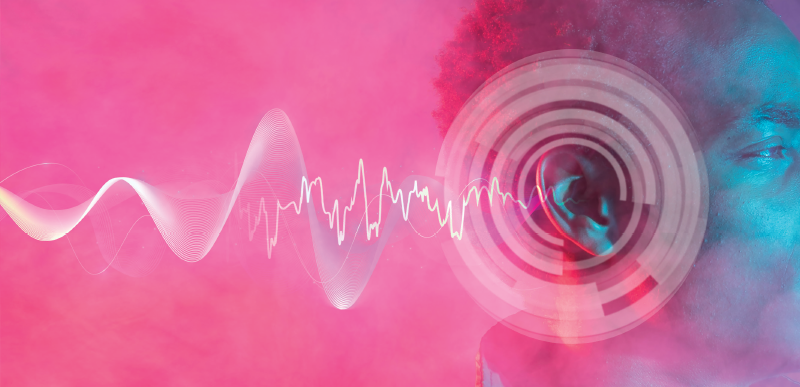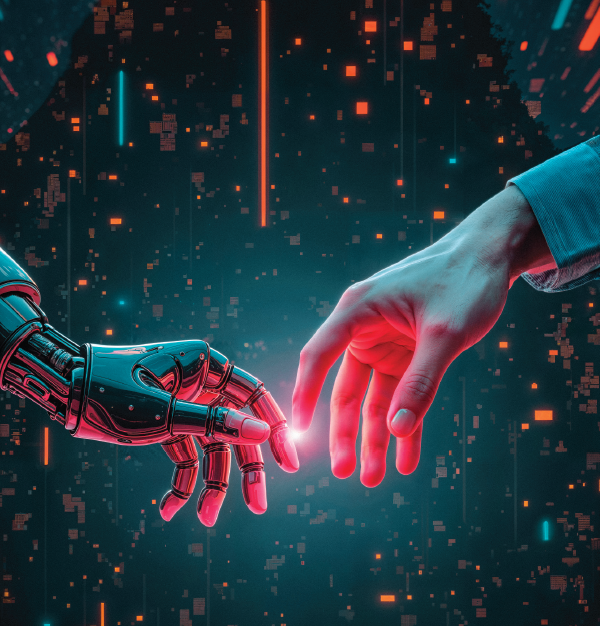Author and cultural critic CHARLES EISENSTEIN opens a two-part series exploring how virtual substitutes for real experience have created a profound sense of alienation in modern life.
Anyone who has attended a great concert will agree that recorded music can never replicate the experience of a live performance. Yet the essential difference is hard to pin down. It isn’t just a matter of being together with other people. You could gather a thousand people in front of giant speakers and play a recorded album, and it wouldn’t be anything like a live concert.
The essential and irreplaceable element of great live music is that the band is singing to the audience—to this audience, in this moment. The music is the vector of a unique, personal communication. To be sure, sometimes the band gives a rote performance, oblivious to the audience response; invariably, the audience feels at least a tinge of disappointment. The band wasn’t on today, they might think. But at its best, live performers are in a dialogue with the audience, responding to their energy, playing differently than ever before or since. Both band and audience remember a great concert fondly, and what makes a concert great isn’t a premier sound system or the musicians’ technical accuracy. Hand the recording of that performance to someone else, listening at a different place and time, and the effect may not be the same.
The essential and irreplaceable element of great
live music is that the band is singing to the audience—to
this audience, in this moment. The music is the vector
of a unique, personal communication.
“You had to be there,” we say.
A mere century or two ago, all music was performed live. Singing in the pub. A lover’s serenade. A lullaby. Gathering after dinner around the piano. Work songs in the field. Children’s songs on the playground. Operas, chamber music, barbershop quartets, church choirs, symphony orchestras. In each of these circumstances, someone was playing or singing to someone else.
Today, such experiences are a rare dish in the musical diet of modern society. That diet does not nourish the human being. It fosters a kind of confusion, even a sense of betrayal. A million years of experience says, “Someone is singing to me.” There must be a band inside the radio, but no. The song was sung at a place and time completely disconnected from me. And so, I feel a little cheated.
Please don’t misinterpret this to mean that we shouldn’t listen to recorded music. It can entertain, give joy and inspiration, generate emotions, or evoke memories. Indeed, it is better than no music at all. However, when it supplants live music, life empties just a little bit more than it already has in the modern world. It empties of reality. When someone plays live, even if it is just my son practicing his scales, the loop from source to ear and back to source—there he is!—is complete. What my ear tells me is here, is actually here. I am not “hearing things.”
One might call recorded music “virtual music.” It has all the auditory appearance of music, but no instruments are being played, nor are any notes being sung. This is all the more true for music produced with synthesizers. Not only is there no hand strumming the guitar right now, there never was.
What’s true of music is true of all recorded sound. As I write this, I am toggling my attention sometimes to the crickets chirping outside my window. My ear follows them out into the night. Would my experience be any different if I were listening to a recording of crickets? The difference might be indistinguishable to the human ear, except that crickets don’t chirp the same way all the time but speed up or slow down according to the temperature and other variables. The practiced ear might notice different tones early or late in the season, or after a rain. And real crickets stop chirping when some person or animal draws close. A careful listener can learn a lot about what’s going on outside from listening to crickets. That experience embeds the listener more deeply in the world, immersing them in a matrix of connections. One can “close the loop” by going outside and finding the cricket.
High-fidelity recordings are available of the sounds of the Amazon rainforest. It is as if you are in the middle of the jungle—but you are not. The operative words here are “as if.” As if you are in the jungle. Your ears tell you you are there. Listen, a jaguar is prowling close. But no, it isn’t. When I listen to such recordings, something holds me back from full immersion—the same instinct, perhaps, that makes me wary of internet scammers. One senses the presence of a lie.

All of the foregoing applies equally to images. I treated this topic in depth in an earlier essay, “Intelligence in the Age of Mechanical Reproduction,” an homage to Walter Benjamin. Watching YouTube, the eye tells us, “There is a kitten there.” Look, it bats a ping-pong ball. But there is no kitten. This was, of course, true of oil paintings as well, but the painting itself remained a unique physical object. (One could also, before recording technology, mimic sounds.) In any case, with computer-generated images and video, what we see on screen is not merely separated in space and time from ourselves; it never existed in the first place. The eye tells us one thing (kitten), while reason tells us something else (no kitten).
Through AV recording technology, and even more through generative AI, we learn a habit of distancing ourselves from what we see and hear. These are among the senses that establish our presence in the world. It’s no wonder so many people feel lost here.
Immersion in a world of virtual sounds and images
induces feelings of alienation and loneliness.
The person who lives in an environment of ubiquitous deceit learns not to trust anything. This lack of trust has dire political and psychological consequences. A serious political consequence is that we no longer trust photographic or video evidence of crimes against humanity. That distrust endows the crimes with a shield that allows them to proceed in full view of the public. Automatically, we discount whatever we see on screen, knowing on some level that it isn’t real—in the sense that there is no kitten cavorting right there; that whatever we are seeing isn’t happening right now. (Or, in the case of computer-generated images, happening at all.) We have, in other words, grown inured to whatever the screen is telling us.
That habit originates quite sensibly, since most of the violence and drama we witness on screens is indeed unreal. If we took all those TV gun battles and car chases as real, they would fry our nerves. So we discount them—discounting along with them images and stories that are real. The eye and ear cannot easily distinguish which is which. They all present the same. That habit of discounting digitally transmitted information makes the public relatively unresponsive to horrifying events. It has been habituated to assume, unconsciously, that this isn’t really happening.
Immersion in a world of virtual sounds and images induces feelings of alienation and loneliness. When we see and hear things that are not there, a dreadful “de-realization” ensues, in which one wonders, “Maybe I am not really here either.” It isn’t usually an explicit thought; it is a feeling, a sense of phoniness and meaninglessness, of living in a simulation. Naturally, we stop caring about what happens to something that isn’t real anyway.
It’s not just mass-produced sounds and images that contribute to modern de-realization. The mass production of commodities preceded and prefigured them. As with a recorded sound, a commodity, as a standard, generic object, carries no visible trace of the social labor that formed it. It comes as if from nowhere, detached from its history and the social and ecological effects of its production. There is no story attached to it, except maybe where you bought it and how much it cost.
Before the industrial era, material objects were also vectors of relationship. Either you made it yourself from local materials, or someone made it for you, someone with whom you were connected in many other ways. Economic relations were interwoven with social relations. Food, clothing, and everything created by human hands circulated in gift networks, anchoring giver and receiver into a web of relationship. They confirmed: you are here. You are connected to the world—a participant, not just a consumer. You are part of the web. Objects that appear out of nowhere, through Amazon’s one-click purchasing, do not connect you to a human being, a place, or a community.
The commodity thus bears a kind of unreality. Despite its material solidity, it contributes to a pervasive sense of phoniness. Here it is, yet no one actually made it for me. It is a material object that appears without undergoing any visible process of material production. Here is an exquisitely intricate design on a dinner plate, yet no artist painted it, not at any rate on this plate. Subjectively, it has no history, no relations, mirroring the loss of “aura” that Walter Benjamin ascribed to mechanically reproduced artwork, and mirroring also the scripted performances of those who occupy society’s standardized roles. Such roles are impersonal. Their occupants seem not to be real people, in the same way as commodities seem not to be real objects. Therefore, cultural sensitives like J.D. Salinger were able to identify phoniness as a defining feature of modern society some 70 years ago, well before the age of computer-generated sounds and images.
Today, we have not only machine-produced objects, sounds, and images, but also machine-produced personalities. The AI chatbot gives every impression that a human being is writing or speaking to you, hearing you, responding to you, understanding you, feeling you, and being there with you. Underneath the words, though, no one is feeling anything. Appearance and reality diverge yet again, and in the end, we are left grasping electrons.
Editor’s Note: In next month’s issue, Eisenstein examines how these patterns of virtual substitution reach their most intimate and potentially dangerous form in artificial intelligence, where machines not only simulate music or images but also simulate the experience of being understood, cared for, and known by another conscious being.


Charles Eisenstein

